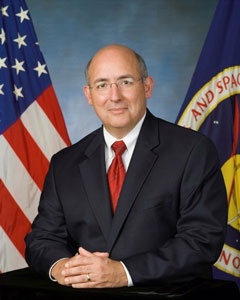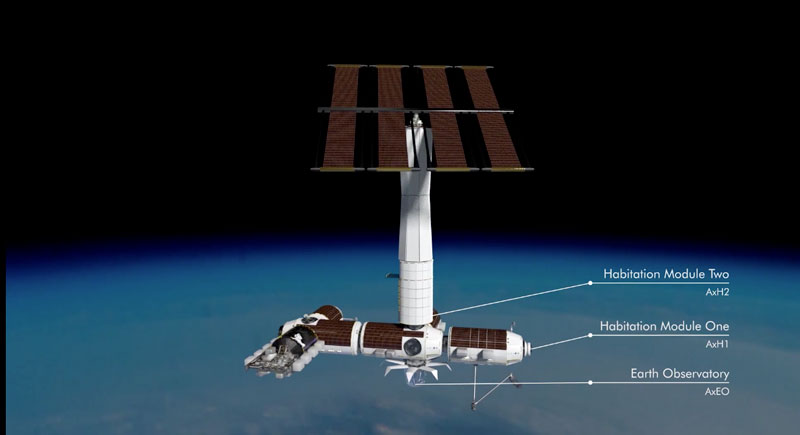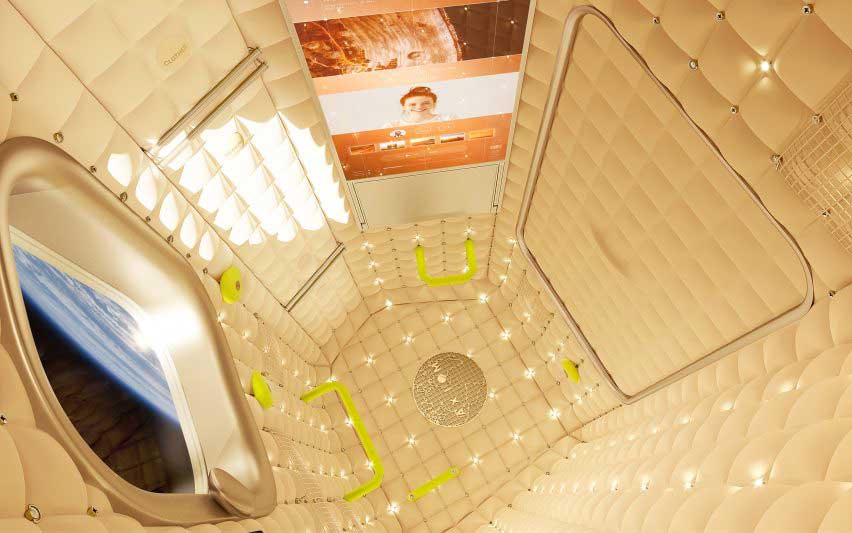Axiom Space
The race to provide facilities for people to travel into space is certainly hotting up. There are several big name companies which are battling to be the first to offer paying passengers a ticket to experience the weightlessness and blackness of space. SpaceX, Blue Origin and Virgin Galactic are relatively widely known, especially amongst people already interested in the rapidly growing commercial space travel industry. But how about Axiom Space?
This company is not so well known, but is in fact a potential game changer – offering the prospect of a privately operated space station for you to stay at once you get to space.
The big three space companies mentioned above will all be offering tickets into space, and some even into orbit around the Earth. But few will be offering anything more than a few minutes or at best hours in space. Axiom Space will be able to offer the prospect of staying for days – maybe more than a week. And if all this seems more like pie in the sky than a station in space, don’t underestimate them: this company can boast seasoned astronauts amongst its employees, plus NASA veterans who were behind the operation of the International Space Station (ISS).
History and Development of Axiom Space
Axiom Space was founded in 2016. It has its headquarters in Houston, Texas, with an additional office in Los Angeles, California. It has a total of well over fifty employees. It may be a relatively new and somewhat compact organisation, but it has more than enough space industry experience to match its grand plans.
Its founder and CEO is Michael T. Suffredini, and he is by no means the typical rich billionaire with grandiose ambitions. Instead, he has a decade of experience as Programme Manager for NASA of the ISS. Chairman Dr Kam Ghaffarian has more than two decades of experience in the space industry, mostly in businesses who were sub-contractors for NASA. Brent Jett is the Operations Manager, with four Space Shuttle mission as pilot and Commander under his belt.
Meanwhile, below board level on the operations side of the company, engineer Stephen Altemus was the Director of Human Spaceflight Programmes at NASA’s Johnson Space Centre for ten years, while his colleague Dr Mike Bain has over twenty years’ experience on the same programme. They even boast an astronaut who holds NASA’s record for the number of space walks – Michael Lopez-Alegria.
The proposed space station has already been designed by the famous French designer Philippe Starck. He is world renowned for his industrial and architectural designs, and was able to draw on the experience of his father, who was an aerospace engineer and space enthusiast. Axiom Space has even hired the same company who designed almost half the modules on the ISS to build their station.
So as you can see, this company is not just the archetypal rich businessman’s fantasy. Axiom Space has the experience, technical know-how and the financial backing to make things happen.

Future Plans for Axiom Space
The plan is to hire a space port on the ISS to begin construction of their new commercial space station. The first and largest module will be launched into a nearby orbit, before docking with the ISS under its own power. Further modules will be added to this. Once it is complete, it could float free, orbiting and operating independently in Low Earth Orbit (LEO). It could even take over from the ISS, which is currently timetabled for retirement in 2025.

Ordinarily, these plans would sound like a bit of a long shot. Why would NASA give up one of its valuable docking ports just so some other private commercial organisation can build their own space station? But in fact, NASA has already indicated that it has just such a spare port, which is available for suitable private operators to use.
This port is currently being occupied by a rival prospective commercial space station operator – Bigelow Aerospace. Bigelow currently has its Expandable Activity Module (BEAM) attached there for a two year test. This test period will be completed soon, at which point the port will once again become vacant. And with all the mutual connections, shared heritage and experience between NASA and Axiom Space, don’t bet against CEO Suffredini sealing the deal.
What will the Axiom space station be used for?
Building and operating a space station is expensive, to say the least. The Axiom space station will be an entirely commercial operation, unlike the ISS. The ISS is state funded, subsidised by the United States, Russia and other international state funded organisations like the European Space Agency (ESA).
So how will it all be paid for? Well, Axiom plans to focus on providing six different services. Together, these are intended to provide sufficient funding to make their space station financially sustainable in the long term.
The most important function from the potential commercial space traveller’s point of view is space tourism. Axiom puts this at the forefront of their plans. In fact, they intend to send their own astronauts to the ISS even before their own space station is complete – perhaps to help supervise its construction and internal set up.
The ultimate goal is to be able to send space tourists to the Axiom space station for a seven to ten day stay. The fully built station will be able to support a crew of up to sixteen. Each astronaut will have their own berth on a separate habitation module.
The Human Spaceflight Programme will enable Axiom to raise revenue by working for various state governments across the world. This could be by providing opportunities for astronauts to visit the station from countries without a recognised space programme. Axiom could also provide educational or scientific services. It could even offer the option of a country operating its own module, which could be attached to the station.
Axiom’s On-Orbit Research and Manufacturing facility would enable governments or commercial organisations to fund their own research and development on the station. This could be in just about any field, including medicine, human health, materials and fluids, satellite development and even pure educational research.
The fact that the station is already in space will also provide the perfect opportunity for nations and commercial companies to test space technology and human capability. This will be especially useful given the long term desire of many nations and commercial organisations to send humans on longer term missions to the Moon and Mars, including the establishment of permanent colonies.
Finally, there will be the opportunity for companies to sponsor the space station, or use it for an advertising campaign. Companies like Red Bull and KFC have already used space for commercial campaigns. Many will also remember Elon Musk’s memorable stunt: launching his red Tesla Roadster car into space via his SpaceX rocket. Axiom’s space station will offer publicity hungry companies any number of imaginative opportunities to grab the headlines.
With this diversified approach, Axiom and its financial investors are confident that their space station will be a commercial success. This is clearly good news for them and their potential customers.

How will astronauts actually get to the Axiom space station?
Axiom does not intend to operate its own rockets. Instead, it will hire space for launches on a commercial basis. It will use spacecraft like SpaceX’s Dragon capsule, or Boeing’s Starliner to access its space station. Its docking ports are planned to be compatible with both these spacecraft, so Axiom will effectively hire space on these capsules to provide a ferry service to its space station.
This will save the company needing to invest the money necessary to develop its own rockets. Axiom will also be hoping that potential competition between all these different commercial space launch systems will keep their launch costs down. Remember that SpaceX, Boeing, Blue Origin, NASA and the Russian’s Soyuz could all provide possible passage to the Axiom space station. There may well be even more potential routes – the Chinese are also planning their own space station. They could also conceivably offer launch capacity for a suitable price.
How much will it cost?
Like all space travel, a stay at the Axiom space station is going to be strictly for the millionaires, possibly billionaires in the early days. The advertised cost for a ten day trip starts at around $55 million. I suppose you could say that your “holiday” would be all-inclusive, but it’s still well beyond the financial resources of anyone but the super-rich.
Unlike a brief trip into space, staying at a “space hotel” is likely to be beyond the resources of the majority of us for the foreseeable future. But remember that even on this niche super-wealthy sector of the future space tourism industry, there will be competition. Bigelow Aerospace is also developing its own space station – it already has a module attached to the ISS. Competition may well drive prices down. Realistically though, people with a regular job are unlikely to be on the guest list of either of these space hotels anytime soon.
